Top Normandy Sights to Excite Art & History Lovers
Artsy Traveler contains affiliate links for products and services I personally use and can happily recommend. As an Amazon Associate, I earn from qualifying purchases. Please read the Disclosure for more information. If you make a purchase through these links, at no additional cost to you, Artsy Traveler earns a small commission. Thank you!
Normandy has many wonderful sights to offer the artsy traveler.
You’ll find charming villages, beaches steeped in history, quirky museums, and a tapestry for the ages.
Spend at least a week in Normandy to explore its long coastline and rolling fields dotted with stone church spires.
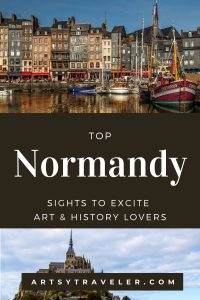
Highlights of Normandy
- Stunning chalk cliffs at Étretat
- Charming Honfleur for the Satie Museum
- World War II beaches
- Historic Bayeux for the Bayeux Tapestry
- Mont St. Michel
Map of France: Normandy
The map below shows the locations of the artsy sightseeing favorites mentioned in this post. Click a number to read more about the location.
Artist-In-Residence in Normandy
A few years ago, Gregg Simpson (husband and artist) and I spent two months at an artist-in-residence place called Les Rouges en Vert in the tiny village of Soligny-la-Trappe in the Perche region of France.
When we weren’t painting (Gregg) and writing (me), we spent many hours exploring a region of France that’s both stunningly beautiful and that has played an outsized role in the history of western Europe.
Here are a few shots of our time at Les Rouges en Vert where Gregg had a painting studio and an exhibition and where I worked on my novel, The Towers of Tuscany.
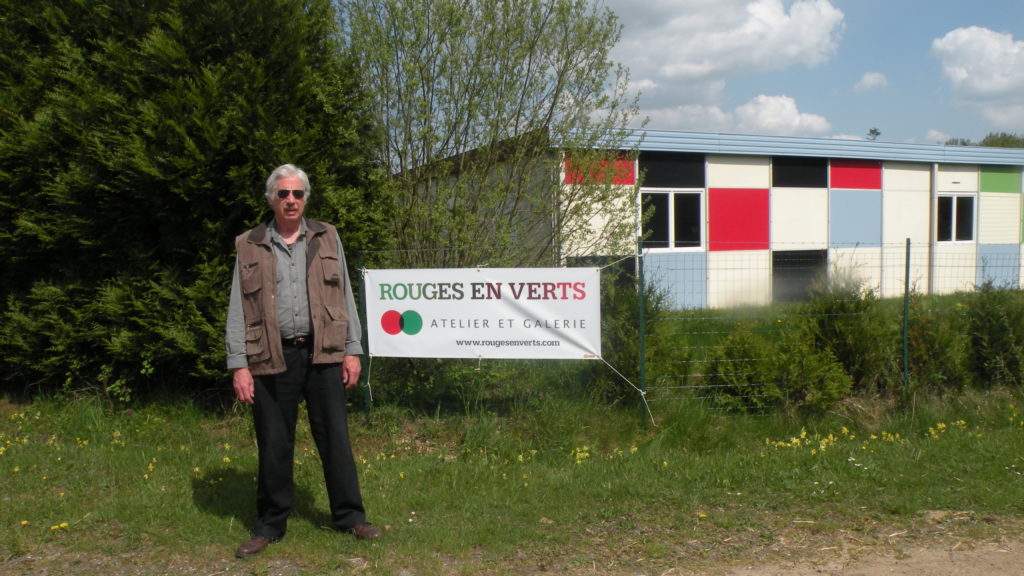
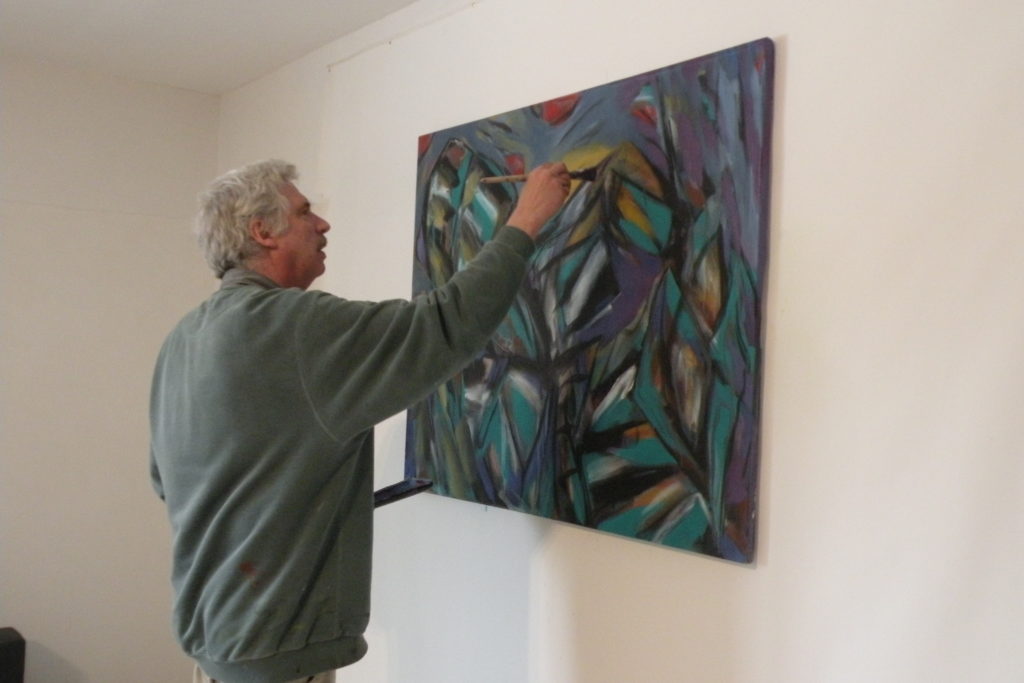
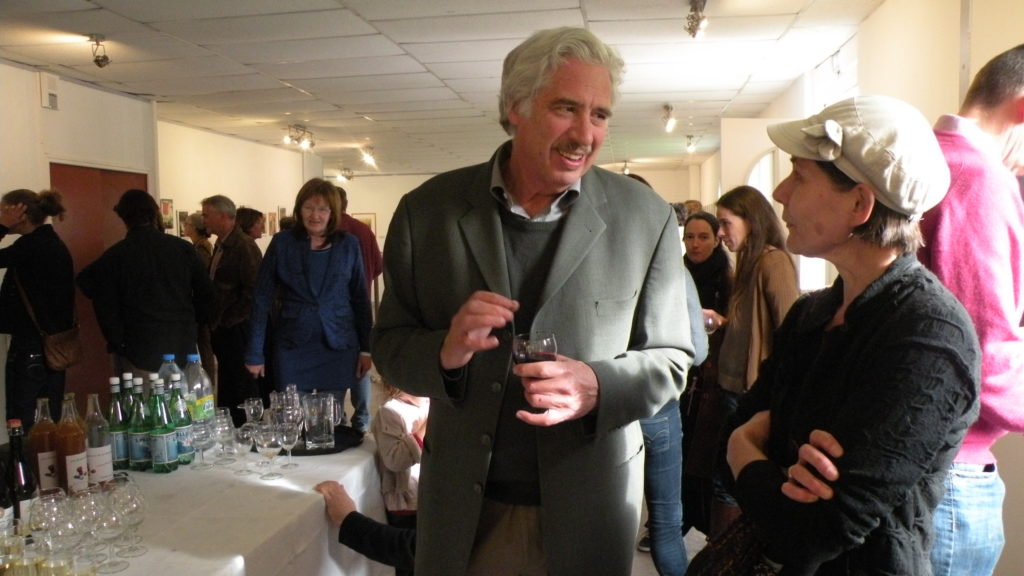
Normandy is home to more than thirty World Heritage Sites, including Honfleur, Mont St. Michel, the cliffs of Étretat, Caen, and Bayeux, all of which are covered in this post.
Cliffs at Étretat
These iconic chalk cliffs captivated Monet, and they’ll likely captivate you. On a clear day, the white cliffs, needles, and arches shimmer in the famous Normandy light. No wonder Monet painted so many views.
Climb to the top of the cliffs from either end of the beautiful sandy beach to enjoy better views than you’ll get from the beach below.
The paths and steps are steep with few hand railings. Vertigo sufferers are advised to admire the cliffs from the beach.
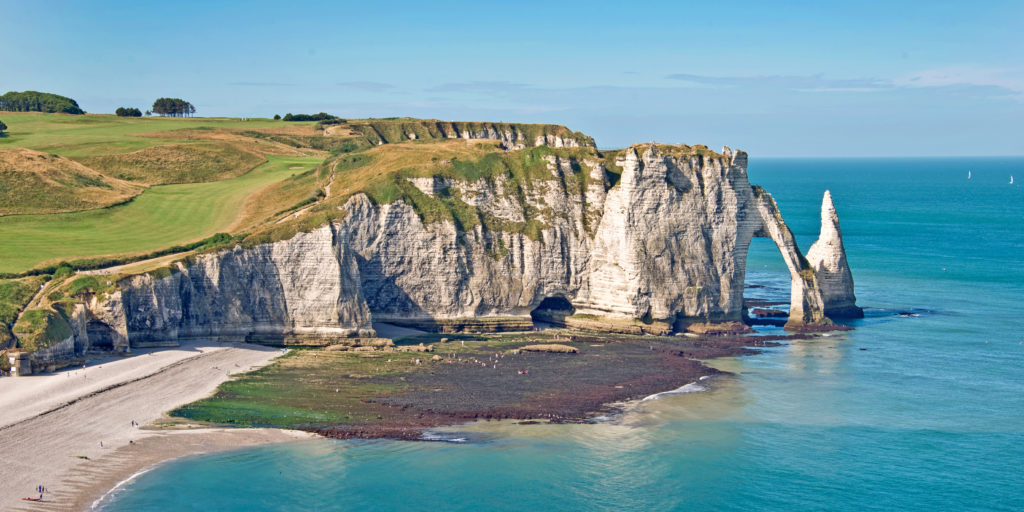
The resort town of Étretat (#1), with its half-timbered houses and outdoor cafés, is a wonderful place to enjoy lunch before or after climbing to the top of the cliffs. You’ll find resort-style shops and even a casino on the beach.
Honfleur
Visit Honfleur (#2) to see where many of the impressionist painters were inspired, including Monet, Renoir, Courbet, Pissarro, and native son Eugène Boudin who has a whole museum dedicated to his work.
Honfleur is fabulous! As an artist, Gregg was captivated by the same luminous light that attracted the impressionists. The town’s dedication to the arts continues, with many art galleries lining the streets of the old town.
The other big attraction, since we love music, is the quirky Satie Museum.
Satie Museum
Known as the Maisons Satie (#3), the Erik Satie Museum ranks high on our list of favorite music museums. The museum occupies the entire house in which Satie was born in 1866.
Satie was a composer from the early 20th century, a compatriot of Debussy, and active in the Dada movement.
When you enter the museum, you’re given an audio guide that takes you on a sonic and sensory journey unlike any I’ve experienced. Put on the headphones, then walk into any room to trigger a range of music, light, image, and sound effects.
The museum even includes a leg-powered merry-go-round to pedal to the accompaniment of Satie’s music.
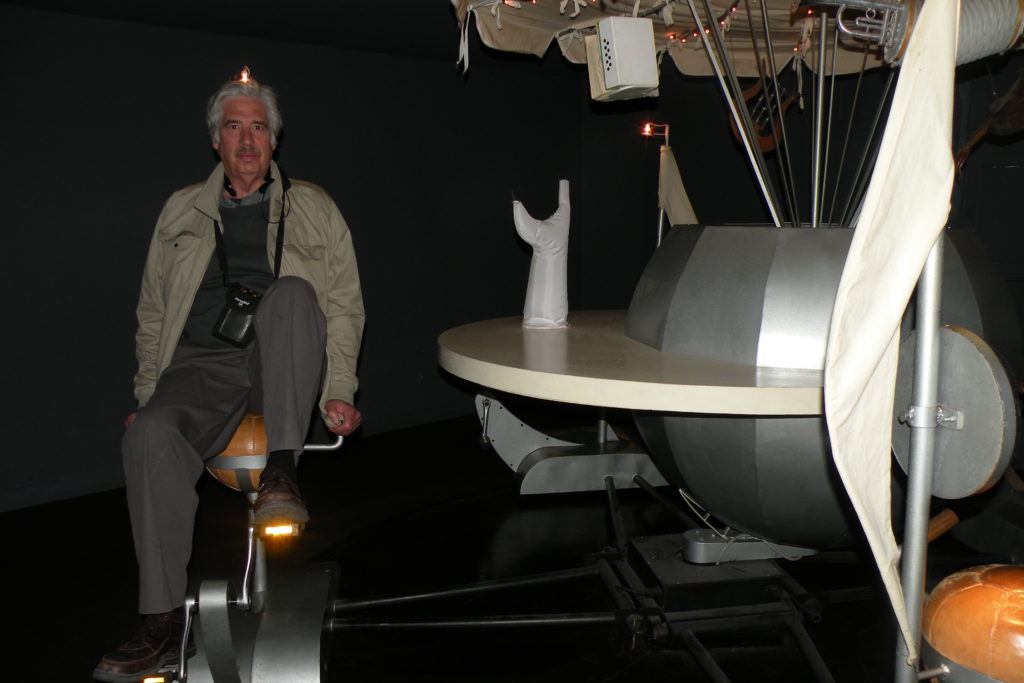
Musée Eugène Boudin
Close to the Satie Museum is the Musée Eugène Boudin (#4). This large museum is worth an hour or two of your time to admire paintings by not only Boudin but also many of his impressionist compatriots, including Claude Monet and Berthe Morisot (one of my favorites).
Enjoying this post? Subscribe to Artsy Traveler to Receive Valuable Travel Tips and Your FREE Guide: 25 Must-Do Artsy Traveler Experiences in Europe for 2025
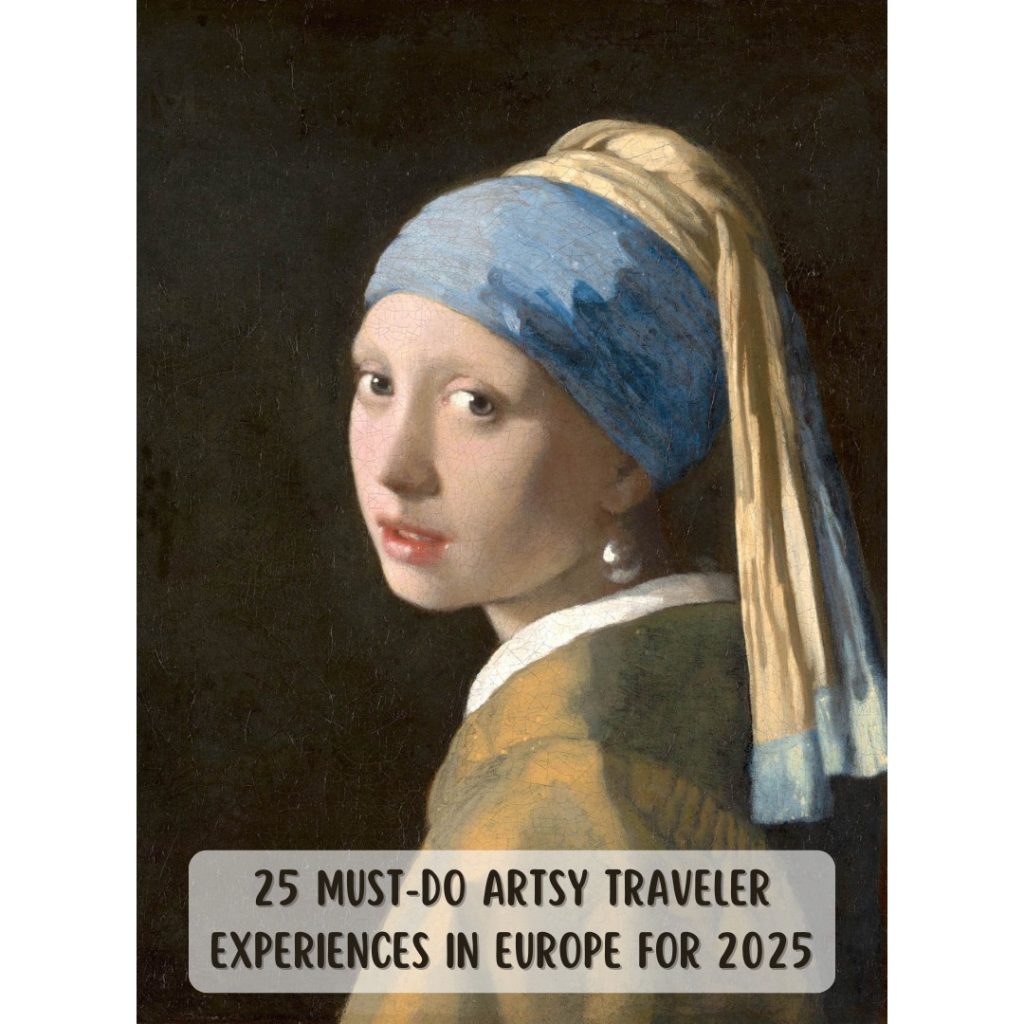
The museum also exhibits clothes and furniture, photographs from 1880 to 1920, a cool collection of more than 100 tourist posters from 1880 to 1950 advertising the delights of Normandy, and even antique toys.
Staying in Honfleur
Stay two nights so you’ll have lots of time to wander the old town and enjoy the Vieux Bassin (#5), where tall, skinny houses rise above a sea of fishing boats and masts.
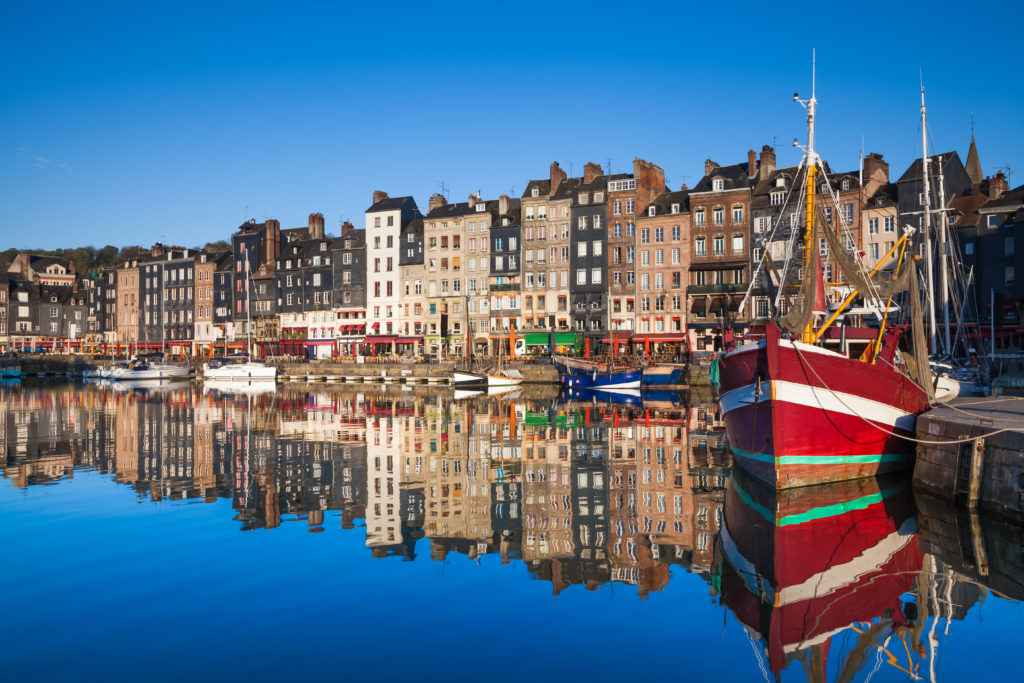
Pull up a chair at one of the many outdoor cafés lining the Vieux Bassin, order moules–frites (mussels and fries), and watch the world go by.
Honfleur is a popular tourist spot with several good accommodation options for staying a night or two. We stayed at the very comfortable Hotel L’Ecrin.
Another option is to make Honfleur your home base for a longer stay in the area. The location is convenient for driving to Caen, the D-Day beaches and Bayeux to the west, and the cliffs at Étretat to the east.
World War II Beaches
Today, the windswept Normandy beaches invite long walks on golden sands, face upturned to a blue sky arched over white-capped waves. I hadn’t expected the area to be so beautiful, considering the devastation it witnessed just a handful of decades ago.
Caen Memorial Museum
Make your first stop the Caen Memorial Museum (#6) near Caen to learn about the D-Day invasion from the point of view of both the Allied and the German soldiers.
Reserve a few hours to browse the comprehensive exhibition of artifacts and films. You’ll leave with a deeper understanding of the Battle of Normandy.
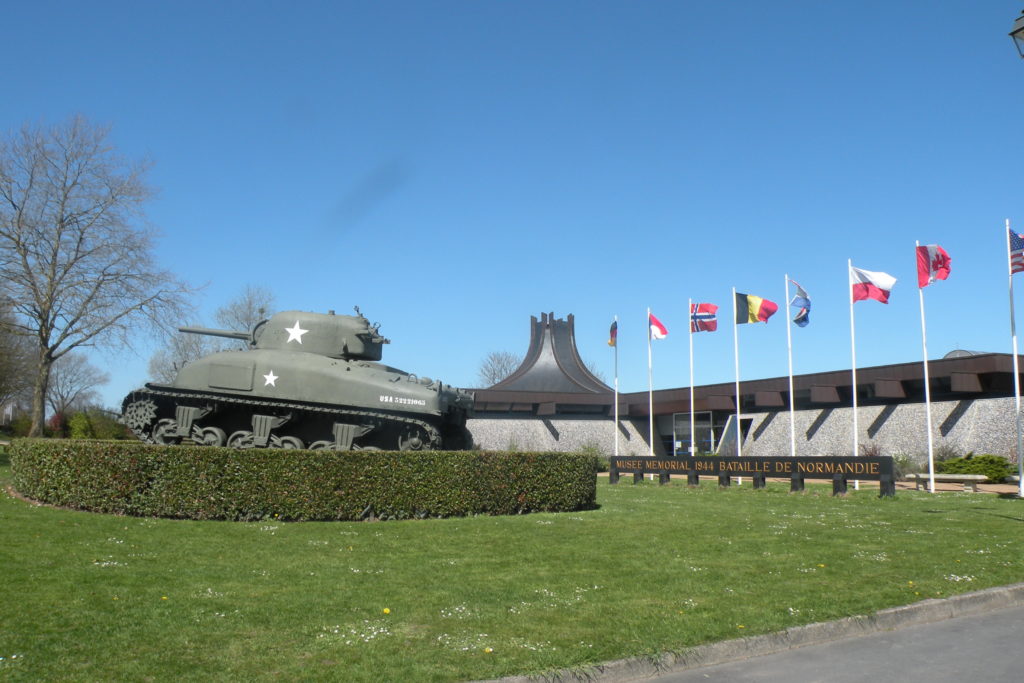
Proceed to at least one of the beaches. We chose Juno Beach, where the Canadians landed on June 6, 1944. If you’re from the United States, you’ll want to see Omaha and Utah beaches farther west.
Visiting Juno Beach
At Juno Beach (#7), a thoughtfully curated museum provides a Canadian perspective on the war and on the invasion.
Most poignant was a film showing a continuous stream of names in alphabetical order of the men who landed on Juno. We knew one of the men and waited for his name to come up, but there were so many that we realized we’d have to wait a long time to see his.
It’s sobering to realize that each name belongs to a young man who, even if he’d survived, would be forever plagued by trauma.
The 54-mile stretch of coastline from Utah Beach in the west to Sword Beach in the east is awash in WWII museums, memorials, cemeteries, and battle remains from the largest military operation in history. You could easily spend several days in the area.
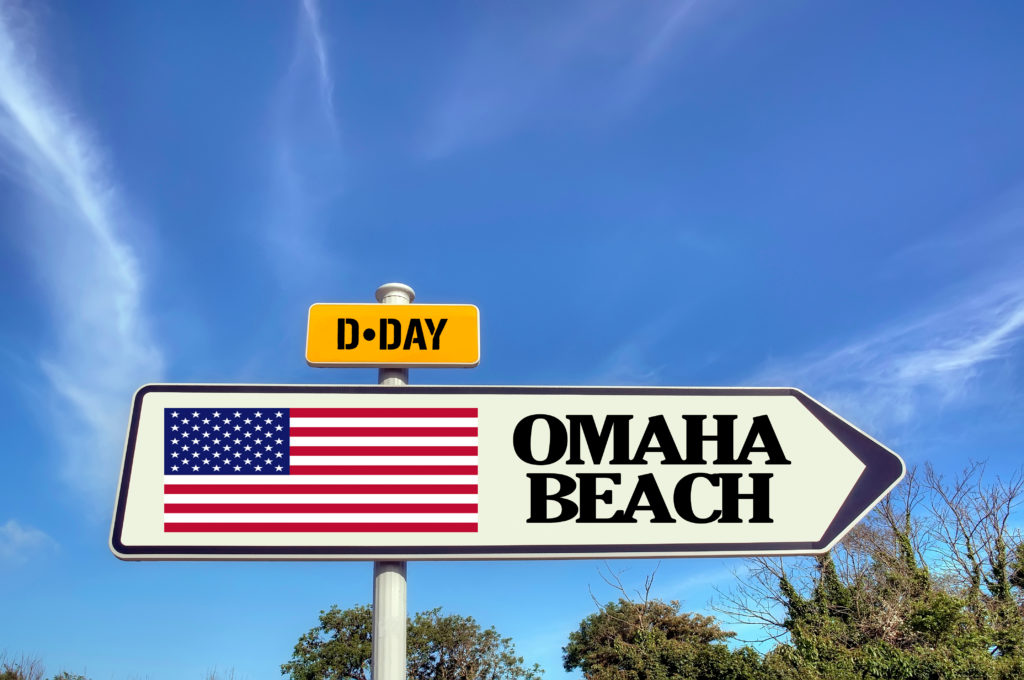
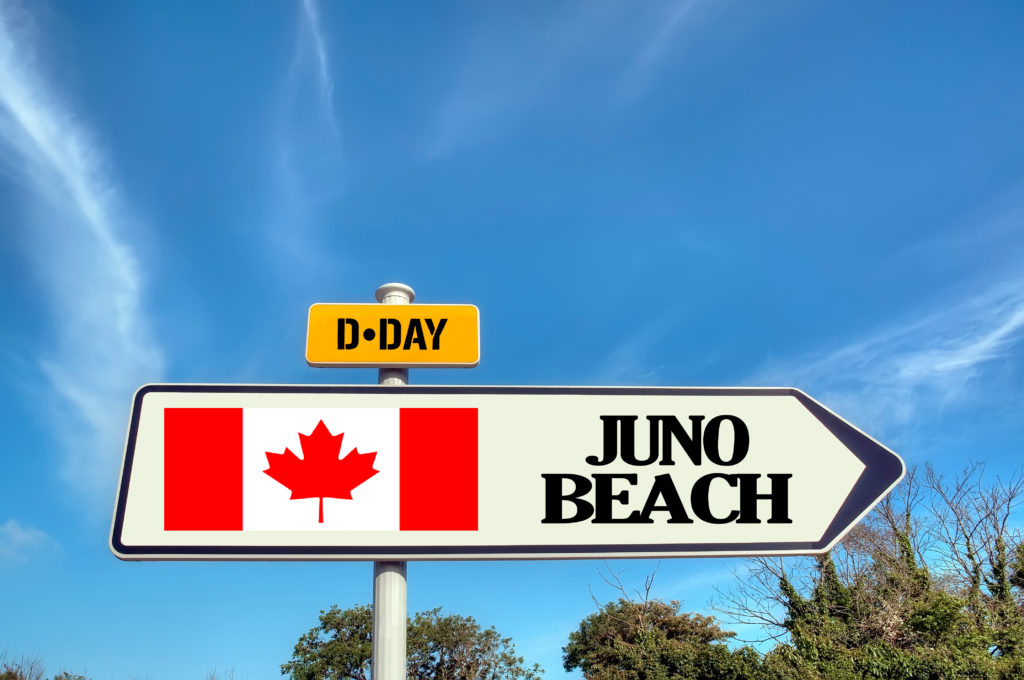
Bayeux
I was thrilled to finally visit the museum housing the famous Bayeux (#8) Tapestry–La Tapisserie de Bayeux (#9). If you’re fascinated by the story of the invasion of England by the Normans in 1066, then you’ll enjoy this fine museum.
The 70-meter-long tapestry is displayed on a special round spool that you walk around to the accompaniment of an excellent audio guide. In the darkened room, only the tapestry is lit. Follow the progress of the invasion—the boats and horses and helmeted men wielding swords.
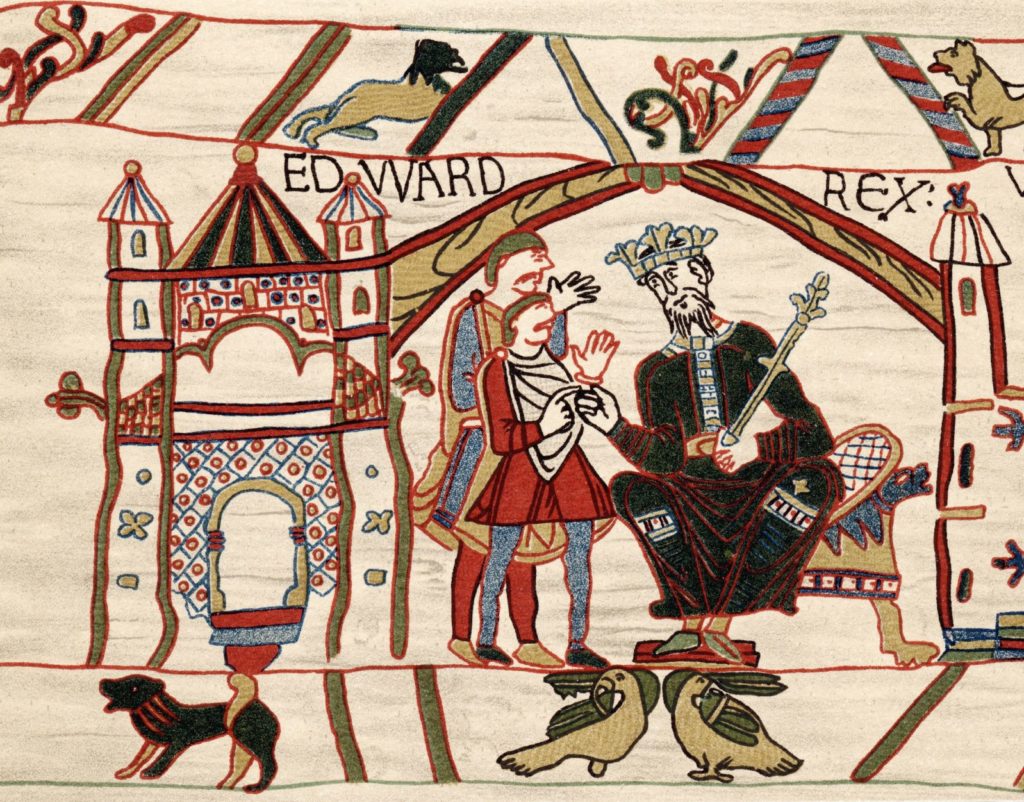
The story told by the tapestry begins in 1064, when Edward the Confessor, King of England, tells his brother-in-law, Harold Godwinson, to go to Normandy and offer his cousin, William, the succession to the English throne. The story ends with the Anglo-Saxons fleeing at the end of the Battle of Hastings in October 1066, although the last bit of the tapestry is missing.
Description of the Bayeux Tapestry Museum
The tapestry contains 58 scenes, 626 characters, and 202 horses.
What intrigued me about the Bayeux Tapestry was that it was created by women. Some historians maintain that the women embroiderers of Kent did the stitching. How did these women feel about telling the story of their invaders? How did they make the designs?
Some of these questions are answered in the film and museum exhibits you’ll see after viewing the tapestry.
The museum is open daily, 9:00 am to 6:30 pm, from February 1st to December 31st. From May to August, the museum remains open until 7:00 pm.
After touring the museum, wander around Bayeux’s quaint streets and pop into the massive Bayeux Cathedral that dominates the skyline. The Bayeux Tapestry was commissioned by Bishop Odo, half-brother of William the Conqueror, to adorn the cathedral where, for centuries, the tapestry was displayed once each year.
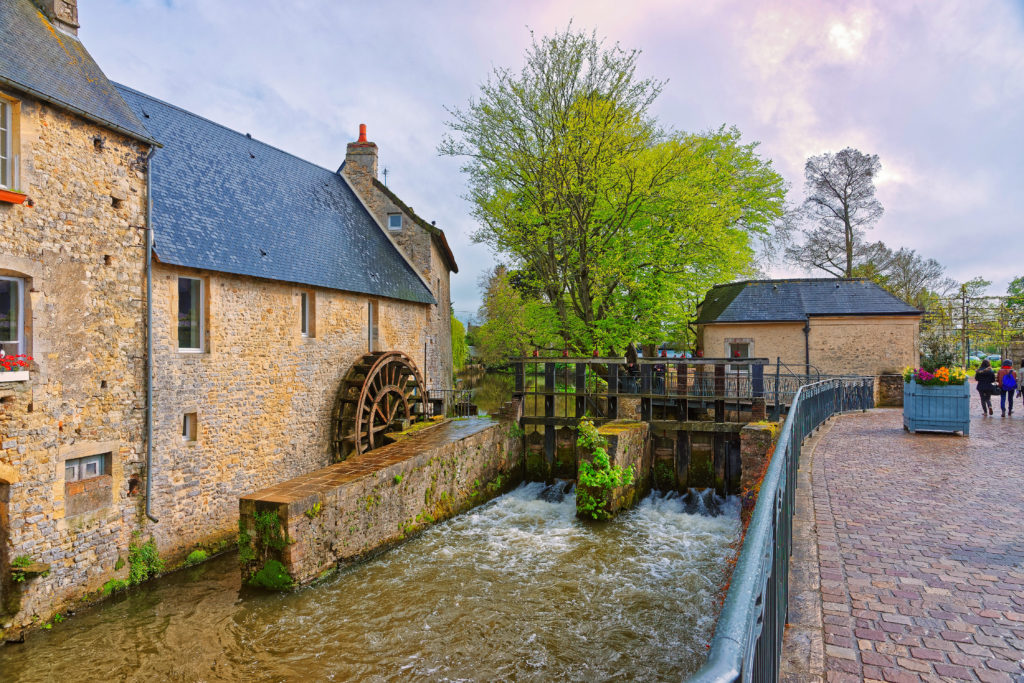
Perche Region
This pleasant area of rolling green hills, thousands of white cows, and grey-steepled churches is not a tourist mecca. It is, however, a popular place for wealthy Parisians to have second homes—and no wonder. The countryside is achingly gorgeous.
Drive around the quiet country roads past lakes and forests and visit some of the charming towns, including Alençon (#10), Argentan (#11), the cathedral at Sées (#12), and L’Aigle (#13). Get out of the car and go walking, make friends with the cows, and visit the Perche Natural Regional Park.
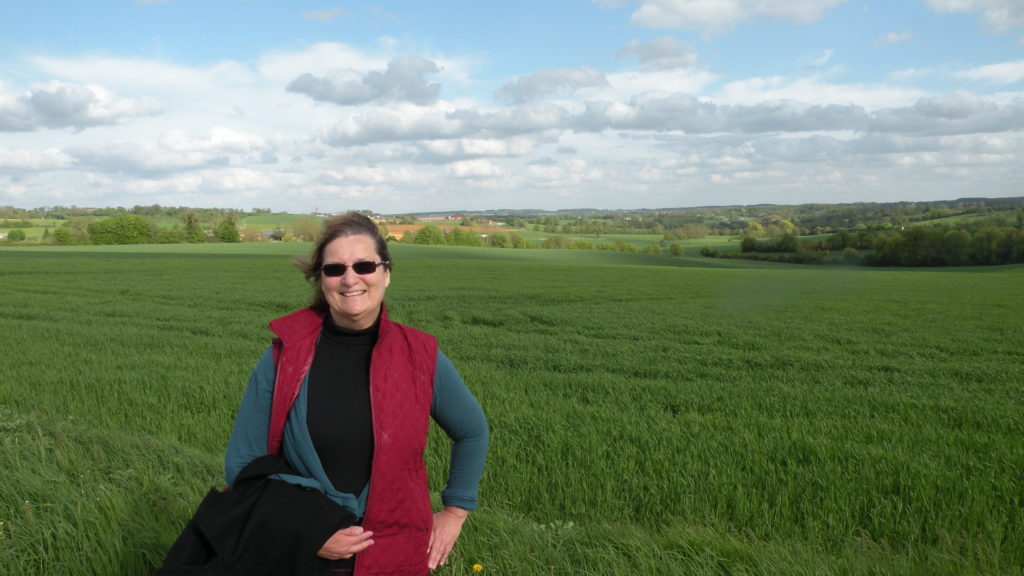
For Canadians, particularly those of French descent, a visit to the Museum of French Emigration to Canada in Tourouvre is worthwhile. Many of the people who populated Quebec in the 17th century came from the Perche region. The museum tells their story.
Here are pictures of the countryside surrounding the place where Gregg and I did a two-month artist-in-residence stint a few years ago.
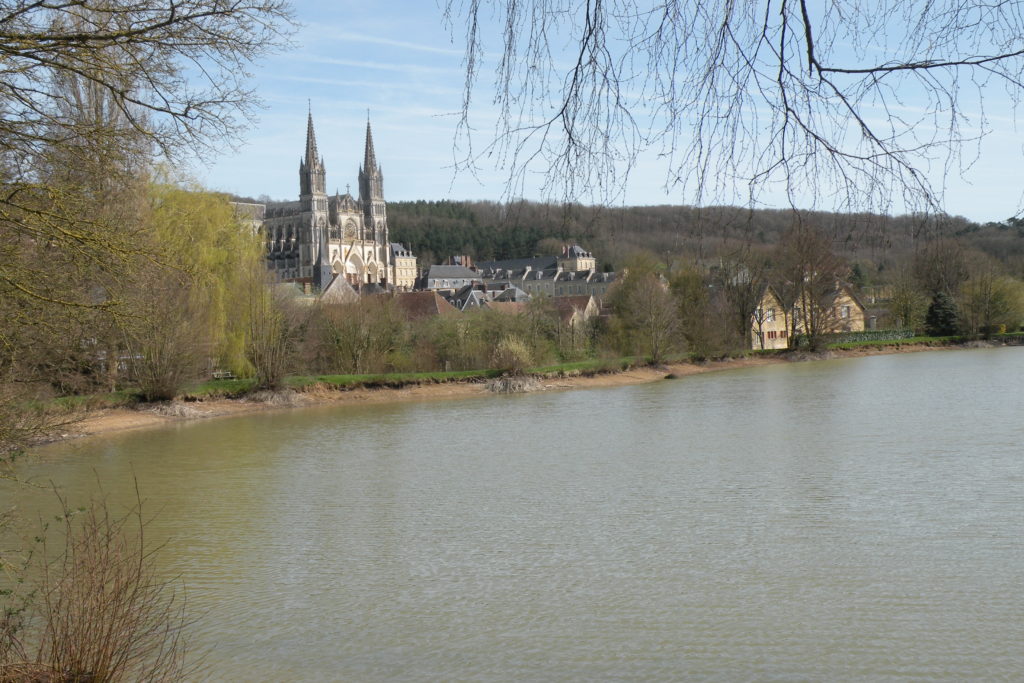
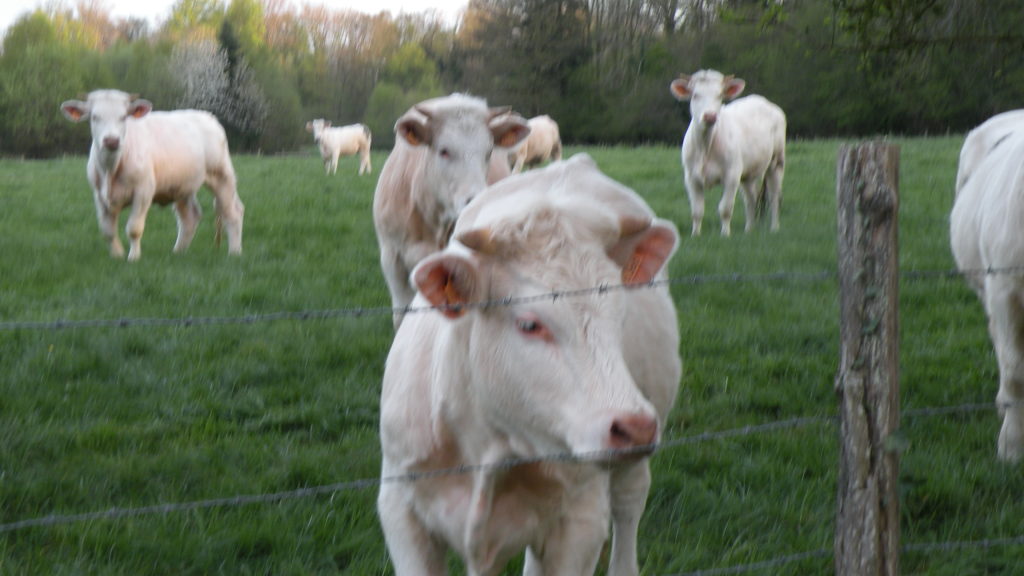
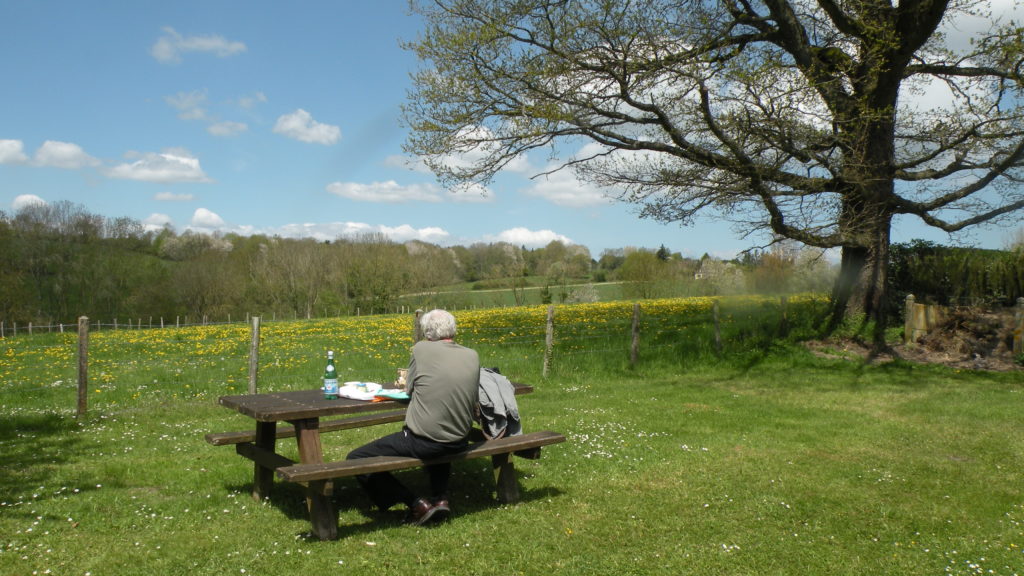
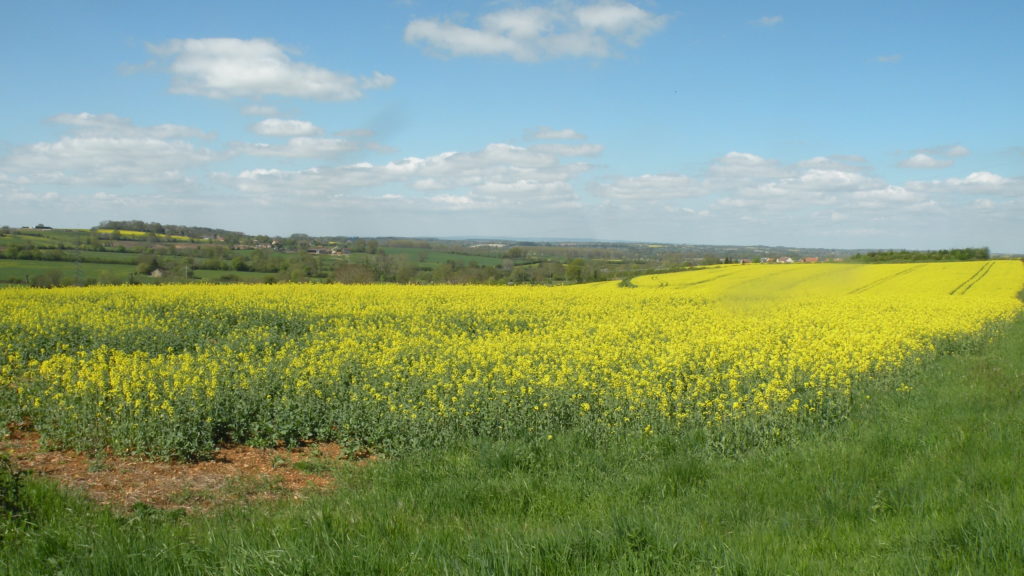
Mont St. Michel
Floating off the Normandy coast on the border of Brittany, Mont St. Michel will make you smile.
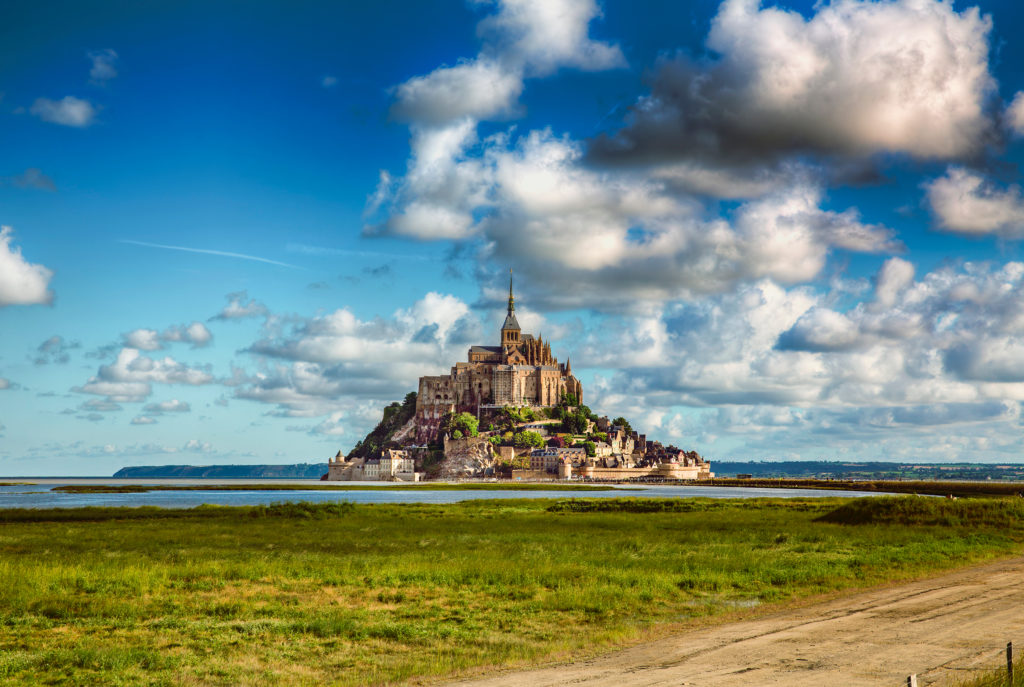
Is it real? Did people from centuries ago actually brave the tortuous tides to build the massive, stone-walled abbey?
Indeed, they did, and since its founding in 966, Mont St. Michel (#14) has attracted pilgrims and now tourists. Its tiny cobbled streets are clogged with souvenir shops and crowds, but visit anyway. The views of the swirling waters from the ramparts of the abbey are breathtaking.
Park in the new car parks located about 1.5 miles from the island and walk to the Place des Navettes to catch a shuttle bus (passeur) across the causeway to the island.
You can also walk across the causeway to the island. Once there, you’ll climb the steep streets to the abbey. Buy tickets in advance to skip the line.
Inside, you’ll find peaceful cloisters, the soaring Gothic church, and one of the grand chambers, known as The Marvel because it clings spectacularly to the rock.
Traveling To and Around Normandy
Normandy is best explored with a car or on a tour from Paris. A good strategy is to pick up a rental car outside of Paris at Charles de Gaulle Airport and then head west into Normandy for at least a week.
On your way to the locations described in this post, stop off in Rouen to view the magnificent cathedral—one of Monet’s favored subjects.
Tours in Normandy
If you choose not to drive in Normandy, consider taking a tour. Here are options through Tiqets.com:
And here are some options for tours in Normandy with GetYourGuide:
Conclusion
Have you visited Normandy? Do you have artsy and historic sites to recommend? Please share your experiences with other artsy travelers in the Comments section below.
Here are some more posts to read next to help you plan and enjoy your time in France:
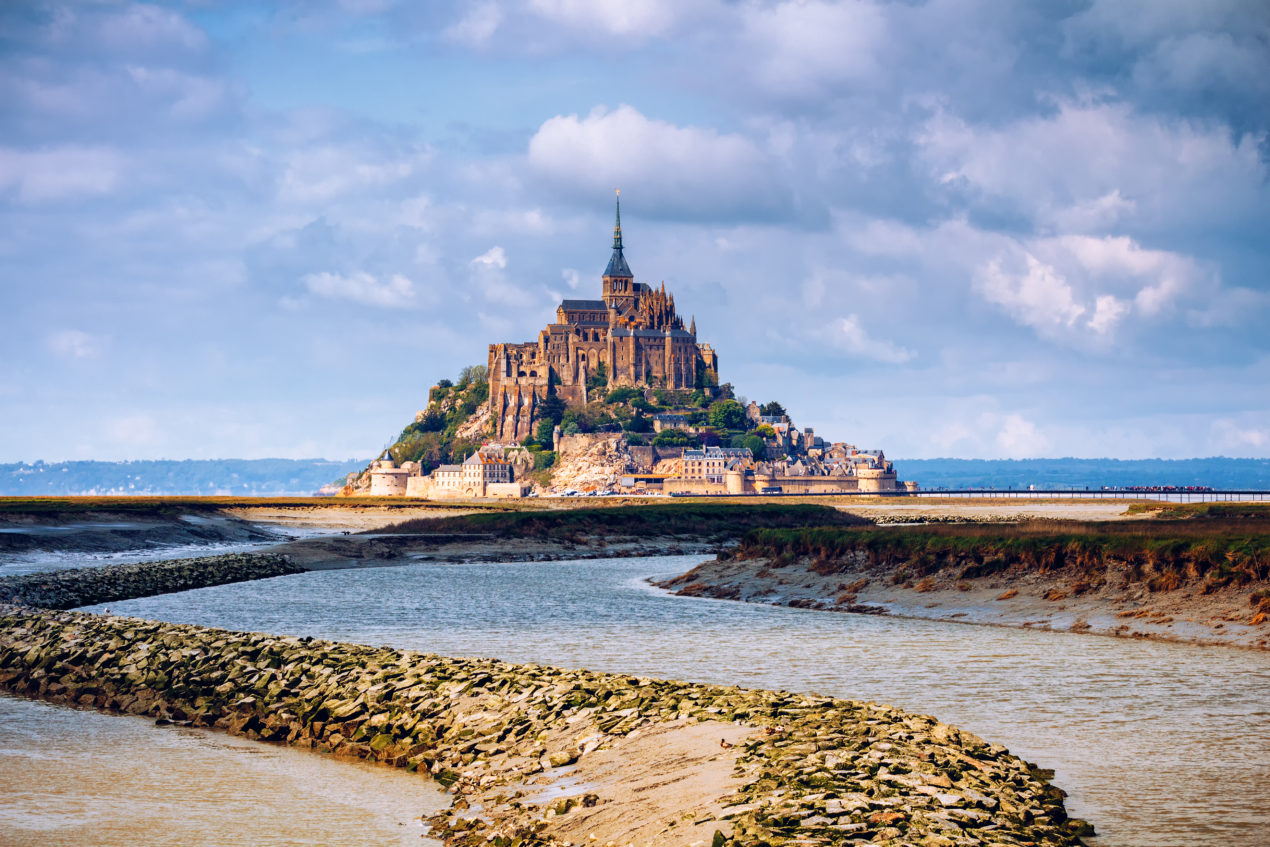
[…] Normandy […]
[…] Normandy […]
[…] more details about what to see and do in Normandy, see Top Normandy Sights for Art & History Lovers. I also include Honfleur on the Normandy coast in my post on 17 Awesome Places in France You Might […]